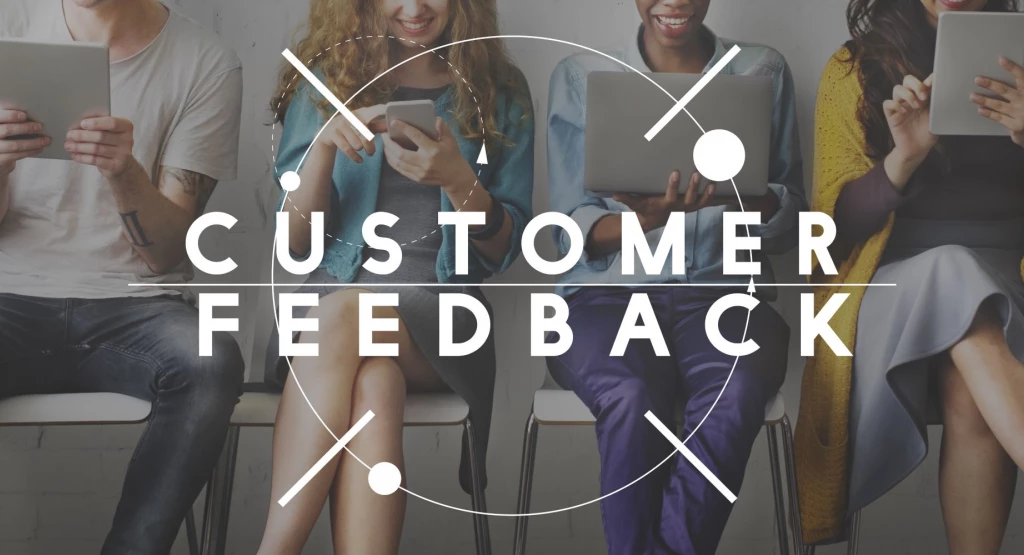A Guide to Getting Customer Feedback
Customer feedback helps you gain insight into your customers and on how to improve your business.

Collecting Customer Feedback
We all know the saying “The customer is always right” though I’m sure most of us can think of a least one moment in our careers when we thought otherwise. But when it comes to collecting feedback on your products and services your customers are the ones you should be listening to. After all, your customers are the people keeping you company in business.
Good customer feedback can help you identify and deal with a number of things such as:
Reoccurring problems of your product or service
Identify “at risk” or unhappy customers
Help you find advocates and potential champions of your brand
Help you spot a gap in the market where you might be missing out on potential business
Help you identify where your market is heading and anticipate the future needs of your customers
There are numerous ways you can collect customer feedback, but below I’ve listed 6 of the most common strategies that you can use to find out what your customers really think.
Customer Surveys
Customer surveys are one of the most common ways to collect customer feedback. Online surveys are a relatively inexpensive and easy way to engage with your customers. Products like SurveyMonkey are a great tool to help you create surveys and help analyse the responses. However, when it comes to collecting customer feedback there are a few best practice tips to keep in mind:
Only ask one question at a time
Keep the survey and the questions as short as possible
Make sure it is consistent
Don’t pose leading questions
When creating your survey there are a number of metrics you can use to more accurately measure your customer’s responses. Two if the most common methods to measure the responses are the Net Promoter Score (NPS) and the Likert scale.

Net Promoter Score And Likert Scale
The NPS measures your customer’s loyalty and is said to directly correlate with revenue. The NPS is based on the question of “how likely is it that you would recommend our company/product/service to a friend or a colleague?” and is scored as a number between 0-10. Any score between 0 and 6 means that the customer is a detractor and is less likely to show value creating behaviour, such as buying more or strong company loyalty. Scores between 7 and 8 are seen as passive and mean the customer is neither promoting nor detracting your brand. Scores between 9 and 10 mean the customer is a promoter of your business. Promoters are more likely to spend more money with you and display stronger company loyalty.
The Likert Scale is normally calculated on the answers to questions with 5 different statements, ranging from: 1. Strongly Disagree, 2. Disagree, 3. Neither agree nor disagree, 4. Agree, 5. Strongly agree.
The benefit of using the Likert scale for your survey is the fact that it is easy to understand and draw conclusions from. However, if you have a large number of people answering with the neutral “3. Neither agree nor disagree” or are somewhere in between the most extreme views it might be hard to get a feel for how strongly or weakly held their opinions really are.
What Is The Aim Of The survey?
The most important part of setting up the survey is that you have a particular aim in mind. Try and keep the survey as short and relevant as possible, if you have a question that you don’t have a particular use for – leave it out. Be careful not to pose leading or one sided questions.
You want to make sure your survey is an accurate interpretation of your customers’ opinions not yours. It might also be important to take into consideration the length of time your customers have to respond to the survey. If you let the survey run for too long customers might end up leaving it for later and forgetting to fill it in. If you set the deadline to soon your customers might not have time to complete it.
A good way to ensure that your customers do complete the survey is to offer some sort of incentive. Incentives can be anything from a voucher or a product discount. Adding a bit of urgency to the response by only offering your incentive to the first 20 people to respond to your survey can insure that your customers respond promptly.
Just make sure that you let your customers know that the price is in no way affected by the feedback they give. You want to make sure your users are providing you with unbiased and honest feedback.
Suggestion Boxes
There could be a number of reasons why a customer doesn’t complete your survey; they didn’t have time, they saw the email too late, they were going to come back to it but forgot, or they simply didn’t feel like it at the time. A great way to allow your customers to leave you feedback when they want is to set up a suggestion box.
These days it’s fairly easy to create a virtual suggestion box and add it to your website. With most CRM systems you can even integrate your form together with your CRM and have responses stored in your customer’s records. Find out how to sync your web form with SpotlerCRM here. Just remember to follow up with your customers and thank them for the feedback.
Focus Groups
Sometimes the most effective way to get feedback is face to face. Make sure you invite a wide selection of customers and/or prospects to come and take part in the focus group. Possibly with the promise of a free lunch or some other incentive.
Focus groups are a great way to speak directly to your customers as it will let you gauge things that you won’t be able to do from an online survey or email, such as facial expressions and tone of voice. It also gives you the opportunity to clarify answers and ask more in depth questions. Who knows, it may even give you some new ideas you haven’t thought about before!
Social Media
Do you know what people are saying about your business on social media? Not only what is being said directly to you on your pages but what is being said on forums and other channels? Have you searched for your company name on the different social media sites? A good online reputation can make a huge difference to your sales so make sure that you are listening and responding to what is being said about you online.
These days it’s relatively cheap to buy software that will keep a track of your social media channels for you. Products like Hootsuite even have a stream that lets you track mentions on social media. Not only will this allow you to keep on top of what people are saying about your business online but it will also allow you to be more reactive and be quicker to respond to customers and prospects that are contacting you via your social media pages.
Another useful tool is Google Alerts. With Google Alerts you can set up certain keywords and Google will then email you when a new webpages, articles or posts appears using that keyword. Setting up a Google Alert for your business name and for your product category is a great way to keep up to date on the latest updates online.

Online Voting Polls
Another way to get customers to engage with you on social media is to ask for their ideas and opinions. One idea could be to create mini surveys on social media and get customers to vote for certain features. Just keep in mind that people visit social media as a way to relax and connect with friends so keep the surveys informal and easy. Some examples of this would be to ask what colour your next product should be or what part of your product they like the most.
Customer feedback is only successful if you listen to what your customers are asking for, did pink get the most votes? Then maybe you should think about launching a pink edition of your next product!
Emailing / Telephone Call
If you prefer a more direct approach, then telephoning or emailing customers individually is a good way to get feedback. Select a few customers who have been happy with your service and maybe even a few that have had some problems in the past and ask for feedback. Direct emailing or telephoning customers can be a great way to turn around customers or identify existing people who are really passionate about your business. If you’re lucky you might find yourself with a few advocates who are willing to refer you to their clients and colleagues in the process.
Reviews
Inviting customers to write a review about your product is not only a great way to get feedback but it can also increase your profits. 88% of people say they trust online reviews as much as they do personal recommendation. If you would like to find more about how to get customer reviews, read our blog 6 ways you can start collecting customer reviews today.
Using a couple of these methods will put you in a good place to be able to identify what your customers are looking for and making sure you are staying ahead of the competition.
Really Simple Systems is now Spotler CRM
The same great technology, a CRM platform that is focused on the needs of B2B marketers, provided by the same great team, at a great price!